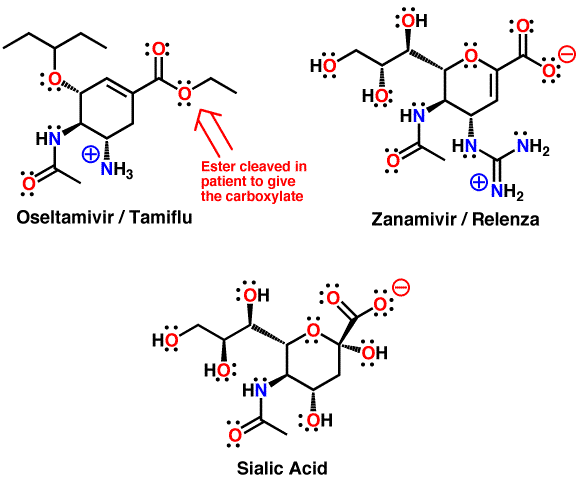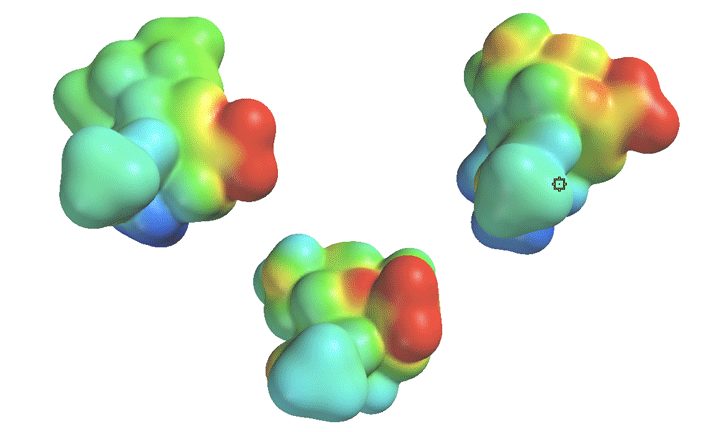

The recent flu outbreak that began in Mexico has brought into sharp focus the need to have antivirals to combat a quickly spreading viral infection. The problem with trying to kill a virus is that there is generally so little to attack. A virus is just a minimal replicating unit, and it generally makes more copies of itself by hijacking its hosts biochemical machinery. Therefore, there are only a few unique functions associated with a given virus, the majority of the replication process is the same as the host. Flu is a particularly infectious viral disease, and because it is so hard to treat, public health approaches to fighting flu have generally involved a strategy based on vaccines. The problem is that there are many strains of flu virus, and it is difficult if not impossible to predict which exact strain will infect a given human population. On top of this, the flu virus mutates quickly, so even if a vaccine is against the correct strain at the beginning of an epidemic, that vaccine is likely to be less effective at the end.
First a few basic facts. Flu has two key proteins on its viral coat, hemagglutinin (H) and neuraminidase (N). The hemagglutinin attaches to a specific molecule on the surface of host cells called sialic acid. After binding, the flu virus is transported into the cell, where it hijacks the cell's biochemical machinery to create more copies of itself. The other protein, neuraminidase, catalyzes a reaction that is involved in the last step of virus production, the cleavage of sialic acid groups off of the host cell, thereby "releasing" newly created virus particles, which are free to infect other cells.
The various strains of influenza are characterized by different versions of the hemagglutinin (H) and neuraminidase (N) proteins. So far about 16 versions of hemagglutinin and 9 versions of neuraminidase have been identified, and these can appear in various combinations. A given vaccine is most effective against only one or a few of these combinations. Immunologists refer to different flu strains according to which particular hemagglutinin and neuraminidase are present on the virus particles. For example, the last 30 years have seen only the so-called H1N1 and H3N2 strains. Fortunately, the Mexican flu is an H1N1 strain. Note that different flu strains can infect different animals such as birds and pigs. These strains are very similar to human flu strains. The bird flu that appeared in 2007 is feared because it is an H5N1 strain, and humans have not been exposed to such a strain since 1968-1969, therefore, we will not have immunity as a population. The infectivity and symptoms would be expected to be more severe across the world.
Vaccines are comprised of the predicted H and N versions expected to appear in the coming flu season. They are based on predictions, and are generally only partly correct. The good news is that as long as the H and N proteins used in the vaccine are at least similar to what appears, immunized people are at least partially protected (they do not get as sick).
The Mexican flu, being H1N1 could turn out to be relatively mild because as a population, we have been exposed, and even immunized against similar strains. However, because there are elements of swine and bird flu in this particular strain, it may still cause significant illness and even death among susceptible individuals. Note that this "mixing and matching" of flu strains is thought to occur in an individual animal or human infected with multiple strains at one time.
Because it is important to have a therapeutic plan in case a flu virus appears for which we do not have a ready vaccine, scientists have been developing so-called antivirals, which are intended to inhibit the neuraminidase function. By inhibiting this function, the virus is not killed outright, but its reproduction is slowed and the symptoms of the disease are reduced. In addition, inhibitors of neuraminidase can prevent infection of exposed individuals in some cases.
Here is a nice review that describes the life-cycle of the flu virus, as well as the mechanism by which Tamiflu and Relenza inhibit neuraminidase. Antiviral review
To see a structure of Tamiflu bound to the active side of neuraminidase, click here.